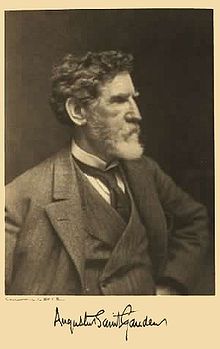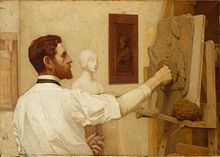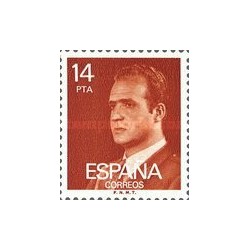- جدید
- ناموجود



توجه : درج کد پستی و شماره تلفن همراه و ثابت جهت ارسال مرسوله الزامیست .
توجه:حداقل ارزش بسته سفارش شده بدون هزینه پستی می بایست 180000 ریال باشد .
توجه : جهت برخورداری از مزایای در نظر گرفته شده برای مشتریان لطفا ثبت نام نمائید.
Jump to navigation Jump to search
| Augustus Saint-Gaudens | |
|---|---|

Augustus Saint-Gaudens, 1905
|
|
| Born | March 1, 1848 Dublin, Ireland |
| Died | August 3, 1907 (aged 59) Cornish, New Hampshire |
| Nationality | American |
| Education | Cooper Union, National Academy of Design, École des Beaux-Arts. |
| Known for | Sculpture |
| Movement | The "Be Silent Be Still" |
| Spouse(s) | Augusta[1] |
Augustus Saint-Gaudens (/ˌseɪntˈɡɔːdənz/; March 1, 1848 – August 3, 1907) was an American sculptor of the Beaux-Arts generation who most embodied the ideals of the "American Renaissance".[citation needed] Raised in New York City, he traveled to Europe for further training and artistic study, and then returned to New York, where he achieved major critical success for his monuments commemorating heroes of the American Civil War, many of which still stand. In addition to his works such as the Robert Gould Shaw Memorial on Boston Common, and the outstanding grand equestrian monuments to Civil War Generals, John A. Logan in Chicago's Grant Park,[2] and William Tecumseh Sherman, at the corner of New York's Central Park, Saint-Gaudens also created [Classical] works such as the Diana. He also employed his skills in numismatics. Most notably, he designed the $20 "double eagle" gold piece (1905–1907) for the US Mint, considered one of the most beautiful American coins ever issued[3] as well as the $10 "Indian Head" gold eagle, both of which were minted from 1907 until 1933. In his later years he founded the "Cornish Colony", an artistic colony that included notable painters, sculptors, writers, and architects. His brother Louis Saint-Gaudens, with whom he occasionally collaborated, was also a well-known sculptor.
Born in Dublin to a French father (Bernard Paul Ernest Saint-Gaudens, shoemaker by profession in a small village in the French Pyrenees called Aspet, 15 kilometers from Saint-Gaudens) and an Irish mother, Saint-Gaudens was raised in New York, after his parents immigrated to America when he was six months of age.
In 1861, he became an apprentice to a cameo-cutter, Louis Avet, and took evening art classes at the Cooper Union.[4] Two years later, he was hired as an apprentice of Jules Le Brethon, another cameo cutter, and enrolled at the National Academy of Design.[5][6] At age 19, his apprenticeship was completed and he traveled to Paris in 1867, where he studied in the atelier of François Jouffroy at the École des Beaux-Arts.[7]
In 1870, he left Paris for Rome to study art and architecture, and worked on his first commissions. There he met a deaf American art student, Augusta Fisher Homer, whom he married on June 1, 1877,[8] whose sister was Elizabeth Fisher (Homer) Nichols. Augustus and Augusta had one child, a son named Homer Saint-Gaudens.
In 1874, Edwards Pierrepont, a prominent New York reformer, hired Saint-Gaudens to create a marble bust of himself.[9] Pierrepont, a phrenologist, proved to be a demanding client, insisting that Saint-Gaudens make his head larger.[9] Saint-Gaudens said that Pierrepont's bust "seemed to be affected with some dreadful swelling disease" and he later told a friend that he would "give anything to get hold of that bust and smash it to atoms."[9]
In 1876, he won a commission for a bronze David Farragut Memorial. He rented a studio at 49 rue Notre Dame des Champs.[10] Stanford White designed the pedestal. It was unveiled on May 25, 1881, in Madison Square Park.[11] He collaborated with Stanford White again in 1892–94 when he created Diana as a weather vane for the second Madison Square Garden building in New York City; a second version used is now in the collection of the Philadelphia Museum of Art,[12] with several reduced versions in museums including the Metropolitan Museum of Art in New York City. The statue stood on a 300-foot-high tower, making Diana the highest point in the city. It was also the first statue in that part of Manhattan to be lit at night by electricity. The statue and its tower was a landmark until 1925 when the building was demolished.[13]
In New York, he was a member of the Tilers, a group of prominent artists and writers, including Winslow Homer (his wife's fourth cousin), William Merritt Chase and Arthur Quartley. He was also a member of the Salmagundi Club in New York.

In 1876, Saint-Gaudens received his first major commission: a monument to Civil War Admiral David Farragut, in New York's Madison Square; his friend Stanford White designed an architectural setting for it, and when it was unveiled in 1881, its naturalism, its lack of bombast and its siting combined to make it a tremendous success, and Saint-Gaudens' reputation was established.
The commissions followed fast, including the colossal Standing Lincoln in Lincoln Park, Chicago in a setting by architect White, 1884–1887, considered the finest portrait statue in the United States (a replica was placed at Lincoln's tomb in Springfield, Illinois, and another stands in London, facing Parliament Square), and a long series of memorials, funerary monuments and busts, including the Adams Memorial, the Peter Cooper Monument, and the John A. Logan Monument.

Arguably the greatest of these monuments is the bronze bas-relief that forms the Robert Gould Shaw Memorial on Boston Common, 1884–1897, which Saint-Gaudens labored on for 14 years; even after the public version had been unveiled, he continued with further versions. Two grand equestrian monuments to Civil War generals are outstanding: to General John A. Logan, atop a tumulus in Chicago, 1894–1897, and to William Tecumseh Sherman at the corner of Central Park in New York, 1892–1903, the first use of Robert Treat Paine's pointing device for the accurate mechanical enlargement of sculpture models. The depictions of the African-American soldiers on the Shaw memorial is noted as a rare example of true-to-life, non-derogatory, depictions of Afro-ancestral physical characteristics in 19th-century American art.[14]
For the Lincoln Centennial in 1909, Saint-Gaudens produced another statue of the president. A seated figure, Abraham Lincoln: The Head of State, is in Chicago's Grant Park. Saint-Gaudens completed the design work and had begun casting the statue at the time of his death—his workshop completed it. The statue's head was used as the model for the commemorative postage stamp issued on the 100th anniversary of Lincoln's birth.[15]

Saint-Gaudens also created the statue for the monument of Charles Stewart Parnell, which was installed at the north end of Dublin's O'Connell Street in 1911.
In 1887, when Robert Louis Stevenson made his second trip to the United States, Saint-Gaudens had the opportunity to make the preliminary sketches for a five-year project of a medallion depicting Stevenson, in very poor health at the time, propped in bed writing. With minor modifications, this medallion was reproduced for the Stevenson memorial in St. Giles' Cathedral, Edinburgh. Stevenson's cousin and biographer, Graham Balfour, deemed the work "the most satisfactory of all the portraits of Stevenson." Balfour also noted that Saint-Gaudens greatly admired Stevenson and had once said he would "gladly go a thousand miles for the sake of a sitting" with him.[2]
Saint-Gaudens was also commissioned by a variety of groups to create medals including varied commemorative themes like The Women"s Auxiliary of the Massachusetts Civil Service Reform Association Presentation Medal and the World's Columbian Exposition Medal. Such pieces stand testament to both his broad appeal and the respect that was given to him by his contemporaries.
A statue of philanthropist Robert Randall stands in the gardens of Sailors' Snug Harbor in New York. A statue of copper king Marcus Daly, is at the entrance of the Montana School of Mines on the west end of Park St. in Butte, Montana. A statue of former United States Congressman and New York Governor Roswell Pettibone Flower was dedicated in 1902 in Watertown, New York.[16]

Saint-Gaudens' prominence brought him students, and he was an able and sensitive teacher. He tutored young artists privately, taught at the Art Students League of New York, and took on a large number of assistants. He was an artistic advisor to the World's Columbian Exposition of 1893, an avid supporter of the American Academy in Rome, and part of the McMillan Commission, which brought into being L'Enfant's long-ignored master-plan for the nation's capital.
Through his career Augustus Saint-Gaudens made a specialty of intimate private portrait panels in sensitive, very low relief, which owed something to the Florentine Renaissance. It was felt he heavily influenced another Irish American sculptor, Jerome Connor.[17]
Over the course of his long career Saint-Gaudens employed, and by doing so, trained, some of the next generation's finest sculptors. These included James Earle Fraser, Frances Grimes, Henry Hering, Charles Keck, Mary Lawrence, Frederick MacMonnies, Philip Martiny, Helen Mears, Robert Paine, Alexander Phimister Proctor, Louis Saint-Gaudens, Elsie Ward and Adolph Alexander Weinman.[18]
New York City's PS40 is named after Saint-Gaudens.[citation needed]

Saint-Gaudens referred to his early relief portraits as "medallions" and took a great interest in the art of the coin: his $20 gold piece, the double eagle coin he designed for the US Mint, 1905–1907, though it was adapted for minting, is still considered one of the most beautiful American coins ever issued.
Chosen by Theodore Roosevelt to redesign the coinage of the nation at the beginning of the 20th century, Saint-Gaudens produced a beautiful ultra high-relief $20 gold piece that was adapted into a flattened-down version by the United States Mint. The ultra high-relief coin took up to 11 strikes to bring up the details, and only 20 or so of these coins were minted in 1907. The Ultra High Reliefs did not stack properly and were deemed unfit for commerce. They are highly sought-after today; one sold in a 2005 auction for $2,990,000.[19] The coin was then adapted into the High relief version, which, although requiring eight fewer strikes than the Ultra High Relief coins, was still deemed impractical for commerce. 12,317 of these were minted, and are currently among the most in-demand U.S. coins. The coin was finally modified to a normal-relief version, which was minted from 1907 to 1933.[20]
The Saint-Gaudens obverse design was reused in the American Eagle gold bullion coins that were instituted in 1986. An "ultra-high relief" $20 (24 karat) gold coin was issued by the U.S. Mint in 2009.[21]
تشکر نظر شما نمی تواند ارسال شود
گزارش کردن نظر
گزارش ارسال شد
گزارش شما نمی تواند ارسال شود
بررسی خود را بنویسید
نظر ارسال شد
نظر شما نمی تواند ارسال شود

check_circle
check_circle















